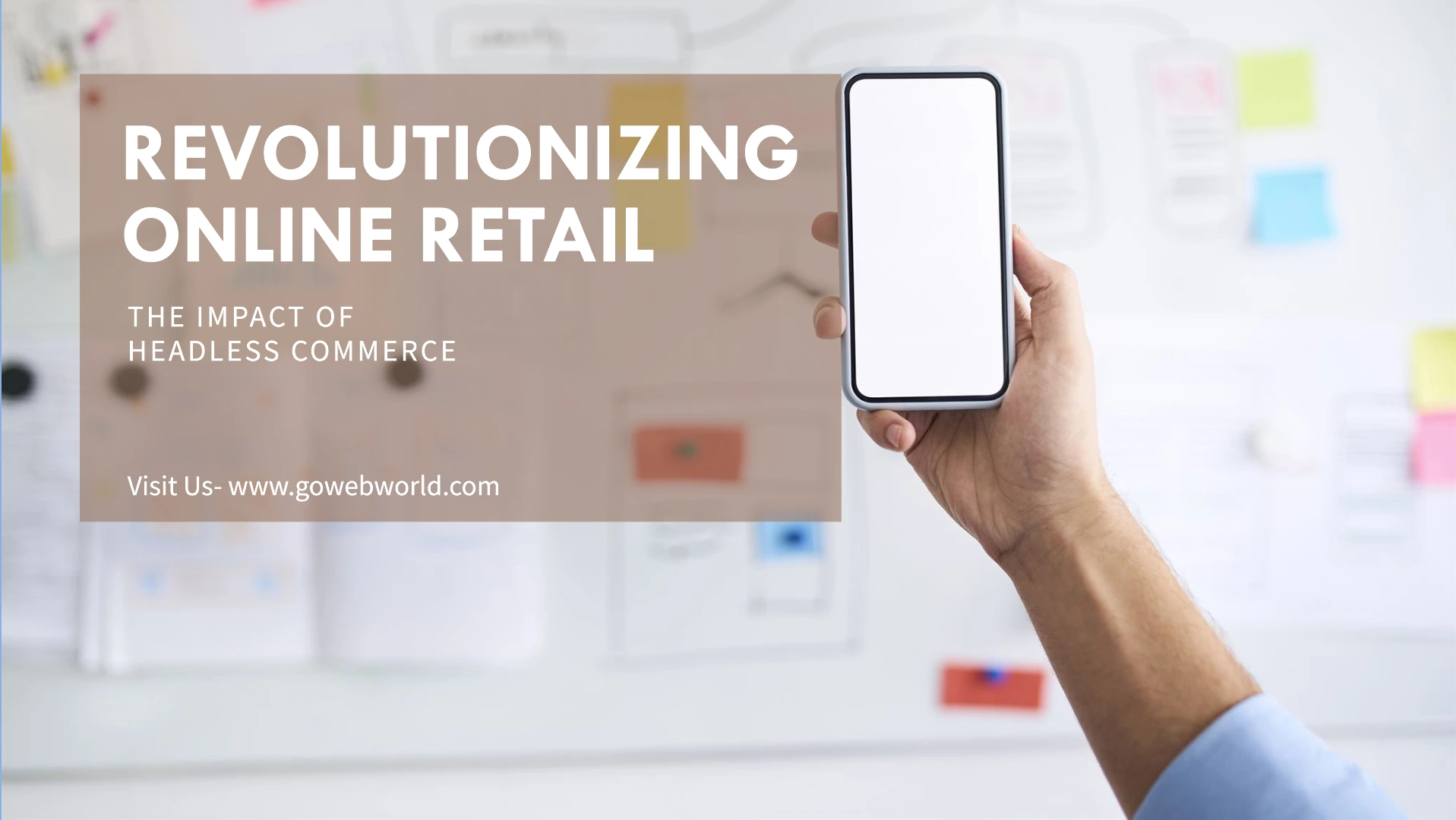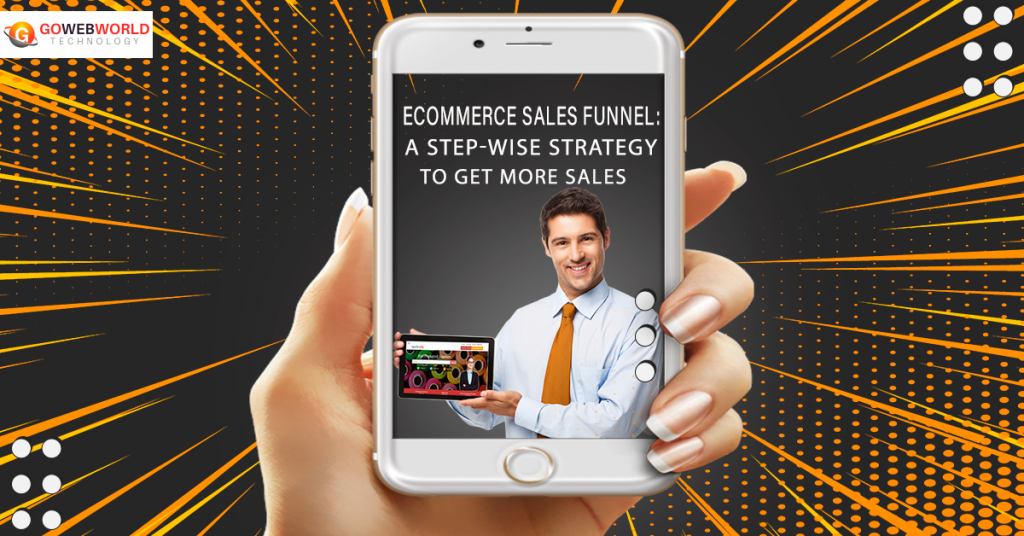In today’s competitive online retail landscape, businesses are constantly looking for innovative ways to provide seamless and engaging customer experiences. Headless commerce, a revolutionary approach to eCommerce, is emerging as a game-changer for businesses seeking flexibility and scalability in their online operations. This technology separates the front-end presentation layer from the back-end eCommerce engine, allowing businesses to deliver personalized and dynamic user experiences across multiple channels. GoWebWorld Technologies, a leading eCommerce website development company in Chandigarh, is at the forefront of this transformation, providing cutting-edge solutions tailored to meet the unique needs of modern retailers.
Understanding Headless Commerce
Headless commerce decouples the front-end user interface from the back-end functionality of an eCommerce website. This separation enables businesses to create custom front-end experiences while maintaining robust eCommerce functionality. Unlike traditional eCommerce platforms, where the front-end and back-end are tightly integrated, headless commerce allows developers to use APIs to communicate between the two layers.
With headless commerce, businesses can:
Deliver consistent shopping experiences across devices such as desktops, smartphones, tablets, and even smartwatches.
Integrate with emerging technologies like augmented reality (AR), voice assistants, and IoT devices.
Scale effortlessly as their business grows and market demands evolve.
Benefits of Headless Commerce for Online Retailers
Enhanced Flexibility
Headless commerce gives retailers the freedom to design and implement unique user interfaces. By leveraging APIs, businesses can integrate their eCommerce platform with third-party tools and applications, offering greater customization options. This flexibility allows businesses to stay ahead of trends and meet evolving customer expectations.
Improved Speed and Performance
With a decoupled architecture, front-end developers can work independently of back-end processes, reducing development time. Additionally, headless commerce enables faster page loading times, providing a smoother and more enjoyable user experience, which is critical for reducing bounce rates and increasing conversions.
Omnichannel Capabilities
In the modern digital age, customers interact with brands across multiple touchpoints. Headless commerce empowers businesses to deliver consistent and engaging experiences across all channels, whether it’s a website, mobile app, social media platform, or voice assistant.
Seamless Integration
Headless commerce integrates easily with advanced marketing tools, content management systems, and CRM software. This compatibility allows businesses to personalize customer journeys, analyze user behavior, and optimize marketing strategies effectively.
Future-Proof Technology
The flexibility of headless commerce ensures that businesses can adapt to technological advancements without overhauling their entire eCommerce infrastructure. This scalability makes it an ideal solution for businesses looking to stay competitive in a rapidly evolving market.
How GoWebWorld Technologies Drives eCommerce Success
As a trusted eCommerce website development company in Chandigarh, GoWebWorld Technologies specializes in implementing headless commerce solutions that empower businesses to thrive in the digital marketplace. With a team of experienced developers and designers, the company offers comprehensive eCommerce website development services tailored to meet the specific requirements of each client.
Custom eCommerce Development
GoWebWorld Technologies’ expertise in custom eCommerce development enables businesses to create unique and feature-rich online stores. By leveraging headless commerce, the company ensures that clients can offer exceptional user experiences while maintaining robust back-end functionality. From intuitive navigation and advanced search features to seamless checkout processes, GoWebWorld Technologies delivers solutions that drive conversions and customer satisfaction.
API-Driven Development
The company’s developers harness the power of APIs to integrate various systems and tools with eCommerce platforms. This approach enhances the functionality of online stores and enables businesses to offer personalized experiences. By integrating payment gateways, inventory management systems, and marketing automation tools, GoWebWorld Technologies ensures that clients have a streamlined and efficient eCommerce ecosystem.
Omnichannel eCommerce Solutions
GoWebWorld Technologies helps businesses establish a strong presence across multiple channels. Whether it’s a responsive website, a mobile app, or an interactive social media store, the company’s solutions ensure that customers enjoy a consistent shopping experience. This omnichannel approach boosts brand visibility and engagement, helping businesses expand their reach and attract new customers.
Cost-Effective Solutions
Understanding the importance of budget constraints, GoWebWorld Technologies offers cost-effective eCommerce website development services without compromising on quality. The company’s solutions are designed to deliver maximum ROI, making it a preferred choice for businesses seeking affordable yet impactful eCommerce development.
Why Choose Headless Commerce?
Businesses investing in headless commerce gain a competitive edge in the dynamic online retail environment. Key advantages include:
Enhanced Customer Experience: Personalized and visually appealing interfaces improve user satisfaction and loyalty.
Scalability: A modular architecture allows businesses to scale operations without technical limitations.
Faster Time-to-Market: Independent development of front-end and back-end speeds up deployment.
Better Security: API-based communication enhances data security, ensuring safe transactions.
Partner with GoWebWorld Technologies
As a leading Custom eCommerce Development Company, GoWebWorld Technologies combines technical expertise with creative innovation to deliver outstanding results. The company’s commitment to client success has earned it a reputation as a trusted partner for businesses looking to leverage the power of headless commerce.
Whether you’re a startup aiming to establish an online presence or an established retailer seeking to upgrade your existing eCommerce platform, GoWebWorld Technologies has the skills and experience to bring your vision to life. From conceptualization and design to development and deployment, the company ensures a seamless journey towards eCommerce excellence.
Headless commerce is transforming the way online retail operates, offering businesses unprecedented flexibility, scalability, and performance. With the help of a trusted partner like GoWebWorld Technologies, retailers can harness the potential of this innovative technology to deliver exceptional customer experiences and drive business growth. As the leading eCommerce website development company in Chandigarh, GoWebWorld Technologies provides tailored solutions that meet the unique needs of modern eCommerce businesses, ensuring they stay ahead in an ever-evolving digital landscape.



